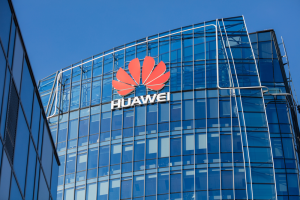How is corrupt behaviour usually detected?
Corrupt behaviour is usually revealed as a result of the obligations placed on financial services businesses and professional services firms to report suspicious activity. This is encouraging because the increasing frequency of revelations of suspicions of bribery and corruption suggests that the legislation designed to combat money laundering is attaining at least one of its three important objectives of:
- Deterring acquisitive crime (i.e. crimes committed for the principal purpose of deriving financial benefit) by making it difficult for criminals to conceal and retain the proceeds of their criminal activities;
- Deterring co-operative crime (i.e. crimes involving bribery and corruption in which the co-operating participants are both detached from the victims and keen for their dealings to remain secret) by increasing the likelihood of detection through the reporting of suspicious transactions, and
- Assisting law enforcement agencies in detecting crime and disgorging the proceeds of crime by providing evidential linkage between the flows of criminal proceeds, the individuals involved in the handling those proceeds and those who stand to benefit from those proceeds.
Whistleblowing, including self-reporting by corporates, is the second most effective means by which corrupt behaviour is revealed. This is evidenced by several of the successes recently achieved by the Serious Fraud Office.
My expectation is that suspicious activity reporting and whistleblowing will be trumped by Unexplained Wealth Orders over the next few years. UWOs have great potential to reveal bribery and corruption.
Dishonesty aside, the key hallmark is that a corrupt transaction makes no commercial sense, because the fundamental component of the transaction (the so-called “act of kindness”) is designed to be invisible.
Are audit procedures effective in detecting corrupt behaviour within an organisation?
The short answer is no. If senior officials of an organisation are receiving corrupt payments, it is virtually certain that the organisation’s auditors will not detect those payments simply because the organisation itself is not a party to the transactions in question.
If the organisation is making corrupt payments, audit procedures do have a chance of detecting the corrupt nature of these payments – but the chance is significantly reduced by the fact that those with knowledge of the corrupt nature of the transactions will most likely have gone to great lengths to conceal their true nature.
One should always question why a transaction is being settled in cryptocurrency.
What is the key hallmark of a corrupt transaction?
Dishonesty aside, the key hallmark is that a corrupt transaction makes no commercial sense, because the fundamental component of the transaction (the so-called “act of kindness”) is designed to be invisible. An organisation making a corrupt payment, perhaps disguised as a consultancy payment, will not receive visible valuable consideration in return for the payment. Inevitably, assessing whether an organisation has received valuable consideration for a payment involves subjective judgment. This makes it difficult for auditors and others to challenge an organisation’s management about potentially corrupt payments.
In my experience, which may not be surprising given the nature of my job, cryptocurrencies are frequently used for dishonest purposes
Is this any different for transactions completed via blockchain technology?
The fundamental principles remain the same although one should always question why a transaction is being settled in cryptocurrency. Given the volatility of cryptocurrencies, it is sometimes difficult to measure the consideration paid in the reporting currency of the organisation which made the cryptocurrency payment. This makes the task of assessing whether the organisation received valuable consideration from the recipient of the cryptocurrency payment even more difficult.
Blockchain technologies know no national borders such that world-wide regulation would be required for any regulation to be effective.
Is it possible to trace transactions completed via blockchain technologies?
In practice the answer is no. In my experience, which may not be surprising given the nature of my job, cryptocurrencies are frequently used for dishonest purposes because it is possible to transact in cryptocurrencies, such as bitcoin, in ways that virtually assure anonymity – for example by using a different bitcoin address for each transaction, avoiding the use of hosted bitcoin wallets, connecting to the bitcoin network through a VPN or a public WiFi network, or by using the services of a mixer. Tracing transactions settled in cryptocurrencies is one thing; discovering the identity of the beneficial owner of the currency is another. Cryptocurrency mixers are specifically designed to guarantee anonymity.
In that case, should cryptocurrencies be regulated?
Most certainly, but effective regulation will not be introduced within my lifetime. Blockchain technologies know no national borders such that world-wide regulation would be required for any regulation to be effective. Inter-governmental co-operation has been in short supply recently.
In cases where a series of payments has been made there is often some correlation between the amounts of the payments and the amounts of the financial benefit derived by the maker of the potentially corrupt payments.
What makes a transaction or an activity suspicious?
This is a challenging question for every financial services business. It is primarily a matter of identifying whether a transaction or an activity is unusual in the context of one’s knowledge of an organisation’s usual business operations. Without a good understanding of an organisation’s business, it is impossible to make an informed assessment about whether something is suspicious because distinguishing between the usual and the unusual would be based on little more than guesswork. Money Laundering Reporting Officers encourage internal reporting whenever a staff member is suspicious so that the MLRO may utilise his or her expertise in assessing whether further enquiries may be warranted before deciding whether to make a suspicious activity report to the relevant authorities. Of course, in deciding whether further enquiries may be undertaken the MLRO will be alert to the risk of tipping-off.
How are suspicions of bribery and corruption investigated?
It is difficult to answer this question in a few words because all cases involving corruption have their unique attributes, but the starting point is to identify the potentially corrupt payments and the persons who ultimately benefited from those payments. This task is frequently made challenging by the use of offshore companies as conduits for the money flows - companies with opaque and sometimes impenetrable ownership structures.
The second task usually involves identifying the nature of the benefits that may have been derived by the maker of the corrupt payments in return for the payments. In cases where a series of payments has been made there is often some correlation between the amounts of the payments and the amounts of the financial benefit derived by the maker of the potentially corrupt payments. For example, in a recent case with which I was involved, the amounts secretly received by a company’s sales director from a supplier were able to be correlated with the amounts of the discounts on list prices charged to that supplier. Evidencing such correlation is most important as it has the capacity to illustrate the deceptiveness of any documentation that may have been prepared contemporaneously to conceal the true nature of the payments.
Authorised push payment fraud is a major problem at the moment
The third task typically involves examining all documentation and correspondence (including emails, text messages etc.) surrounding the potentially corrupt payments with a view to demonstrating the falsity of any documents prepared to conceal the true nature of the payments and the dishonest intentions of the participants.
How do you present evidence of corrupt behaviour in court?
To some extent this depends on whether the evidence is to be used in civil or criminal proceedings. The use of graphics, for example to illustrate the correlation between the benefits derived by the recipients and makers of corrupt payments, is usually appreciated by a court but this becomes more important in criminal trials, where a jury requires more assistance than would a judge in civil proceedings. Evidencing the movements of monies and illustrating these movements with flowcharts frequently assists a court.
On occasions, particularly in circumstances in which monies flowed through a series of offshore bank accounts, it is also important to evidence the identities of those who authorised transactions to be made and to establish the identities of the persons on whose authority those persons were acting.
The major UK banks are introducing a safeguard that requires the name of the intended recipient of monies to match with the sort code and account number.
What initiatives are likely to prevent fraud over the next few years?
I am pleased that there is a straightforward answer to this question. Authorised push payment fraud is a major problem at the moment, and it is inadvertently facilitated by the fact that only a sort code and account number are required to match before making an online payment. The major UK banks are introducing a safeguard that requires the name of the intended recipient of monies to match with the sort code and account number. This initiative is most welcome as it will significantly reduce APP fraud risks, although pre-payment precautions must be taken when remitting monies to overseas accounts.
Mark Ballamy
Ballamy LLP
85 Gresham Street
London
EC2V 7NQ
Telephone: 020 3705 9945
Website: www.ballamy.co.uk
Mark Ballamy is a Forensic Accountant accredited by the ICAEW and an accredited accounting expert witness. He is a partner in Ballamy LLP, a specialist firm of forensic accountants based in London, and has over 30 years’ experience of working in the forensic accounting sector. He has worked on several assignments which have involved suspicions of bribery and corruption.




















